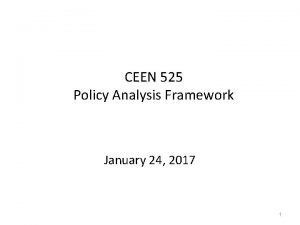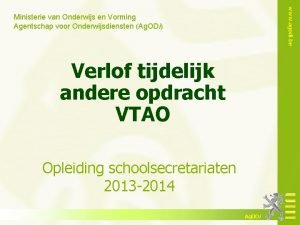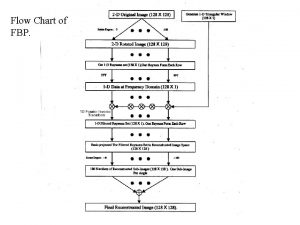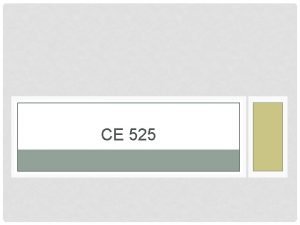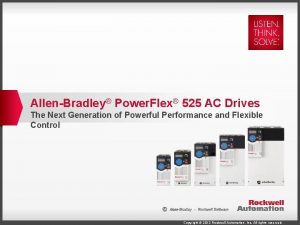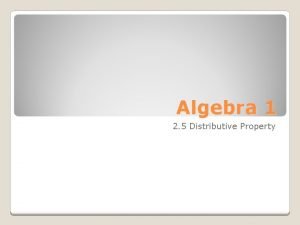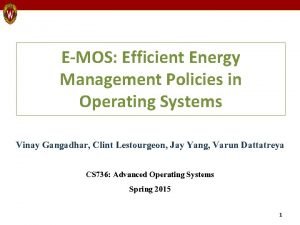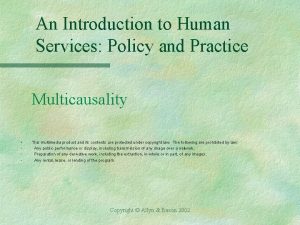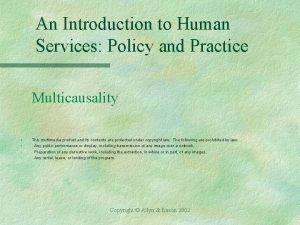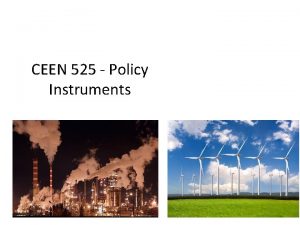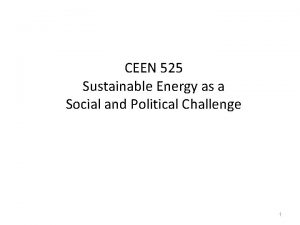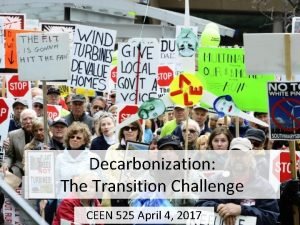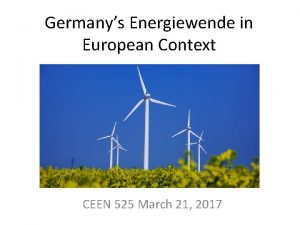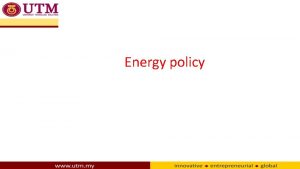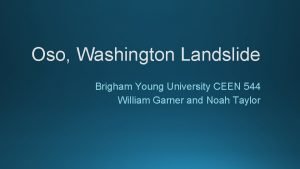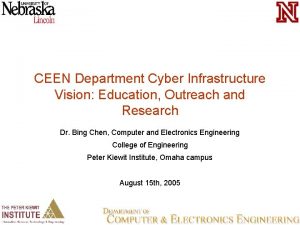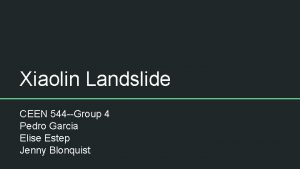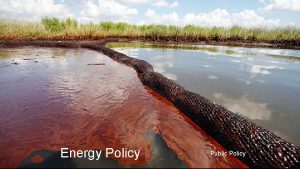CEEN 525 Energy Policy Introduction January 10 1













- Slides: 13

CEEN 525 – Energy Policy Introduction – January 10 1

Today’s agenda • Go over syllabus • “Deep decarbonization” • Policy brief assignment • Introductions • Next week 2

3

3 pillars of decarbonization 4

Feasibility – Deep Decarbonization Project in Canada Sustainable Development Solutions Network, Pathways to Deep Decarbonization – 2014 Report, Canada Chapter. Led by Jeffrey Sachs

Affordability: IPCC GDP Growth Current path 2° Scenario 2030 100% 98% 2050 240% 236% Annual global GDP lost by moving from current path to 2° scenario: 0. 06%

Government action is needed to drive the clean energy revolution 7

Policies for the Clean Energy Revolution Meaningful climate targets (with timeline) Effective plans to meet those targets Project planning and approval processes

Major assignment • The major assignment for the course is writing a policy brief to the senior government official responsible for energy policy of a country (or state/province) on policies to achieve decarbonization of a major component of the energy system by 2050. • Apply policy analysis framework • Easier if a DDPP analysis has been done 9

Mini-briefs • Mini-brief 1: Define your policy problem. Specify 3 -4 criteria and 3 -4 alternatives (begin in class January 24, due January 31 by noon). • Mini-brief 2: Your minister has been asked to give a presentation to the International Energy Agency, which has just decided to conduct a review of your country’s energy system and policies. You are tasked with providing an overview of your system of government according to the following template (due February 7 in class) • Mini-brief 3: Your minister… You are tasked with providing an overview of existing energy policy in your jurisdiction as it relates to decarbonization (due March 7 at noon). 10

Full Policy brief • Write a policy brief to the senior government official responsible for energy policy of a significant jurisdiction on policies to achieve decarbonization of a major component of the energy system (e. g. , electricity generation, passenger transportation, buildings, etc) by 2050 (or earlier). • Due April 14 by noon. • 6000 - 7000 words excluding references (no longer) 11

January 17: Sustainable Energy as a Social and Political Challenge • David G. Victor, Global Warming Gridlock, (Cambridge: Cambridge University Press, 2011), Chapter 2, “Why global warming is such a hard problem to solve. ” (online UBC Library http: //site. ebrary. com/lib/ubc/doc. Detail. action? doc. ID =10460494) • Dan Kahan, et al, “The polarizing impact of science literacy and numeracy on perceived climate change risks, ” Nature Climate Change 2 (October 2012), 732 -5. • Gregory C. Unruh, “Understanding carbon lock-in, ” Energy Policy 28 (2000) 817 -830. 12

How to read an academic paper • What’s the main argument (or puzzle)? • What subsidiary arguments support it? • Are there underlying or explicit value assumptions? • What evidence is used to support the argument? • Does the evidence support the argument? • Do other (better? ) arguments support the observed outcomes? 13
 Ceen definition
Ceen definition Tao onderwijs
Tao onderwijs Jjc placement testing
Jjc placement testing Bme 525
Bme 525 Ce-525
Ce-525 525 dibagi 5
525 dibagi 5 En61800 5
En61800 5 Salmo 525
Salmo 525 6(525) distributive property
6(525) distributive property Energy energy transfer and general energy analysis
Energy energy transfer and general energy analysis Energy energy transfer and general energy analysis
Energy energy transfer and general energy analysis Emos os
Emos os An introduction to human services policy and practice
An introduction to human services policy and practice Multicausality in human services
Multicausality in human services
